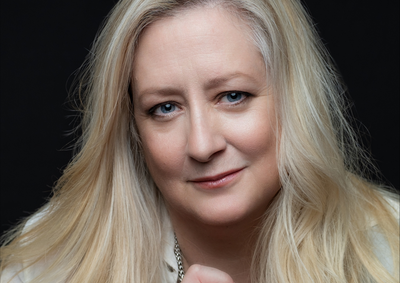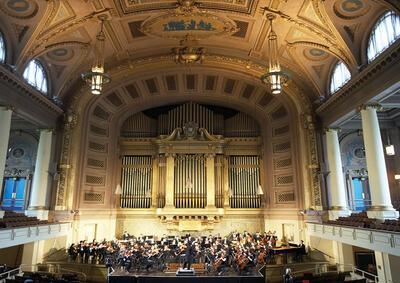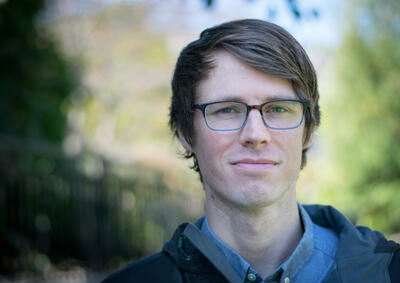On the Trail of Gottschalk
By Richard Rosenberg
LISTEN Magazine
In the mid-nineteenth century, American pianist and composer Louis Moreau Gottschalk traveled to Cuba. In 2010, conductor and musicologist Richard Rosenberg followed him there. Searching for Gottschalk’s lost orchestral works, what Rosenberg found was much more complicated.
Havana, the capital of Cuba, is now a dilapidated shadow of its former glory, with gaping holes in the sidewalks, crumbling buildings, dirty streets and, on every corner, a taxi driver trying to hustle you into a rusty wreck of a classic car.
Not so in the 1850s, when Louis Moreau Gottschalk (1826-1869) visited Cuba. At that time, the American was known internationally as a virtuosic, flamboyant pianist and composer—a sort of Elvis Presley of the Victorian era—and Havana was one of the premier centers of Western culture. The elegant 1837 Teatro Tàcon (now the Teatro Garcia Lorca) was one of the finest theaters in the world, and it was there, in 1859, that Gottschalk presented a “monster concert” with more than six hundred fifty musicians on the massive stage. Gottschalk took frequent trips to Cuba, his first lasting a year (1854-55). He traveled to Havana and many cities beyond, composing, conducting and enjoying his time as a cultural tourist.
In June, thanks to an AlumniVentures grant from the Yale School of Music, I spent three weeks in Cuba following Gottschalk’s tracks. Since my first exposure to his adventurous orchestral literature, I have spent a great deal of my life retracing Gottschalk’s steps, researching and creating performance editions of his unjustly neglected works for orchestra, as well as conducting them where he originally premiered them. It was my hope that Cuba would turn up some of his most intriguing compositions that, until now, had been lost to the ages. At the very least, I would experience some of the tactile influences responsible for his unique musical voice.
Gottschalk grew up in New Orleans and at the age of twelve was sent by his parents to study in Paris. There, tutored by Charles Hallé (founder of the Hallé Orchestra in England), Frédéric Chopin and Hector Berlioz, he was hailed as the “King of Pianists,” rivaling Franz Liszt and Sigmund Thalberg. A friend of both Jacques Offenbach and Georges Bizet, Moreau, as his family called him, became the first American to have a celebrated international concert music career and the first to popularize the use of tunes from the New World—especially his native Crescent City—in classical music composition. Perhaps his greatest significance, apart from his “firsts” as a performer and composer from America, is the way in which his works predicted later developments in North American music. The syncopation and jagged melodic lines of many of his pieces point forward to ragtime and jazz, and his use of musical quotations as both psychological and musical devices clearly anticipates the music of Charles Ives, Jerome Moross and Aaron Copland. A favorite of both Abraham Lincoln and Jefferson Davis, Gottschalk was, more importantly, the first unofficial Pan-American cultural ambassador. He traveled throughout Central and South America, premiering many of his pieces in places like Uruguay and Brazil. Havana was an appealing destination for one of these ambassador-esque tours.
Due to his skill at the instrument, most of Gottschalk’s compositional output was for the piano (or multiple pianos) and was written for specific occasions. In both his orchestral music and his devilishly difficult piano works, he wrote for specific audiences that would have been familiar with the influences he emulated. Although he wrote comparatively little orchestral music, what he did write sounds like a cross between Mendelssohn and Jerome Kern, with music alternating between long, often melodramatic phrases (heralding what Wagner would do in the decades to come) and rousing folk-inspired rhythms, resulting in something highly original and accessible.
It could be argued that Louis Moreau Gottschalk should be as famous a composer as Chopin—Chopin himself thought so—but Gottschalk’s music fell out of favor for more than a century after his death. One reason may have been that Gottschalk was a Southerner who embraced abolition, and so was posthumously rejected by both the North and the South. But more likely, his absence from the great orchestral literature may be because, due to Gottschalk’s travel schedule, his work was only sporadically collected and archived. His unpublished manuscripts were rarely deposited in libraries; when traveling and not near his publishers, he left many compositions with relatives and friends, and some manuscripts did not surface until long after his death, if at all. He also died young (at the age of forty) and never reached his full potential, nor retrieved works he had lodged with others and intended to collect at a later date.
The lost Gottschalk compositions I sought in Cuba included works for military band like Marche Guerriére, Las Ponceñas, La Puertorrequeña and Valse de Bravura; works for large symphony orchestra like Marche du Festival and the orchestral parts for Marche Triunfal and Final del Opera; and his two operas, Isaura di Salerno and Amalie Warden.





